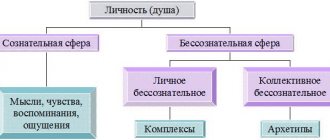Professional self-determination is a form of personal choice that reflects the process of searching for and acquiring a profession. Self-determination is realized in the process of analyzing personal capabilities and abilities in relation to professional requirements. Currently, the understanding of professional self-determination takes into account the problems of the relationship with the life self-determination of the individual, and also includes the influence of the influence of the social environment on the individual and his active position. In a market economy, the problem of freedom to choose a profession and ensuring the competitiveness of an employee is acute.
Self-determination in psychology
When choosing a profession, a person overestimates past events and correlates the choice of activity with life goals. The importance of self-orientation is that work is one of the leading areas of life.
Psychologist A. Klimov worked on the formation of the structure of self-determination, correlating professional orientation with criteria for the quality of mental development of the individual. Psychology connects self-awareness with the choice of lifestyle according to personal attitude towards a specific job.
The structure of professional self-determination consists of:
- awareness of belonging to a specific professional group;
- assessment of the place of work and personal development according to public and personal standards;
- recognition by the group of membership in the community;
- understanding weak and strong traits, individual and productive ways to achieve mastery;
- a person’s opinions about himself and his work.
In psychology, two levels of professional self-determination are defined: practical and epistemological. The first group includes events or actions that influence external factors around the individual (social status, change in marital status). The second group includes changes in internal factors, whose restructuring is caused by events or work itself.
There is no single task of career guidance for science. Age-related characteristics of professional self-determination influence the technology of choice at each period of time. The driving force is the acceptance of human responsibility for development.
Professional self-determination and self-realization are closely related. Read more about personal self-realization →
Related terms:
- this is a comparison of images of oneself within the framework of the system of activity requirements, on the one hand, and the bearer of current aspirations (without relatively fixed requirements), on the other hand, complete
- a specific process of his personal and professional development, which is determined by the combination of the civil servant’s orientations towards his own abilities, capabilities, aspirations
- this is the self-determination of the game technology in the game process based on the essence and value of the game technology function in the activity system. To enter into the game process, the game technician must, in the abstract and more
- mental mechanism for individuals to gain freedom in a group, when different individual opinions and points of view are not suppressed by mechanisms of imitation and suggestion, as in a simple group, but gender
- a person’s awareness of his place in life and in society.
- defining oneself in relation to the criteria for personality development developed in society and consciously accepted by a person and further realizing oneself based on these criteria.
- the process of formation by a person of his attitude to the professional-labor sphere and the method of his self-realization through the coordination of intrapersonal and social-professional. needs. P.S. may be considered
- this is a comparison of images of oneself within the framework of the system of requirements of mental communication, on the one hand, and the bearer of the actual aspirations of the participant in communication or the one who assumes entering into mental communication
- this is a comparison of images of oneself within the framework of the requirements of communication, on the one hand, and the bearer of the current aspirations of the participant in communication or offering entry into the cycle of communication, on the other hand, completed
- the implementation of pedagogical self-determination of a gaming technician or player in ODI, which involves highlighting a layer of ability correction in the integrity of the layers of players’ existence and coordinating this layer with the rest
- developing an attitude towards the requirements characteristic of ODI at the preparation stage and during the game. The specificity of self-determination in ODI lies in the predominant importance of activity and, especially
- self-determination regarding type-based and situationally significant (specific) requirements for the organization of self-change and self-development of students.
- the degree of self-esteem as a specialist in a certain profession.
- self-determination of students in relation to continuing education at the stage of transition from unified to variable (profile) education.
- a conscious act of identifying and asserting one’s own position in problematic situations; an active attitude towards the situation, sometimes even associated with risk, since it is aimed at protecting ethically
- correlation of images of the actual “I” and “I”, resulting from the peculiarities of the strategic specification of the requirements of the managerial type-activity function. SUS. is specified taking into account the specifics
- self-determination regarding functional and specific situational requirements for organized self-change and self-development of a person, and the expression of these requirements on the part of the teacher.
- are the correlation of “I” images, one of which reflects the real, established aspirations of the manager as a person in all its diversity, and the other expresses the requirements of the managerial type
- a conscious act of asserting a higher moral position and striving for true freedom. S.d. expressed both in individual form and as a manifestation of the spirit of the people. Historical context S.d. (apply
- the readiness of schoolchildren to choose their own work, professional path, awareness of their own interests, individual psychol. features of your personality.
Basics of professional self-determination
Career guidance is a multifaceted concept that includes pedagogical and psychological factors.
Self-determination is divided into three subtypes:
- Professional (choice of profession).
- Personal (prioritization: career development or personal improvement).
- Life (defining the purpose of existence).
The described subtypes are interrelated and complement each other.
A person for whom work is the meaning of life realizes his personal goals through a career or achieves heights in his hobby (music, painting, sports) that exceed the achievements of professionals in a particular field.
Self-determination is characterized by the following characteristics:
- relatively large formality (diplomas, certificates of education, entries in the work book, real achievements);
- the existence of favorable conditions for development (equipment, team/management, social need for activity).
Worker self-realization faces many obstacles. Society is not ready for a fair assessment of the work of a particular person; there may be a lack of ways of implementation in the chosen field due to several reasons (health, underdevelopment of the industry).
Specific signs of life self-determination:
- the comprehensiveness of the lifestyle that is characteristic of the usual socio-cultural environment;
- the degree of dependence of the individual on stereotypes and public opinion;
- the level of influence of social, economic and objective factors that determine the life of a social and working group.
The purpose or meaning of life is gradually formed from one’s own judgments, the opinions of society and upbringing.
Characteristic features of personal self-orientation:
- impossibility of formal measurement;
- the need for more complex conditions, problems that allow one to reveal the inner qualities of a person.
This need for “complexity” explains the emergence of heroic individuals during periods of wars and other disasters. In relatively prosperous times, personal choice is expressed in life goals and principles of behavior.
How to help your child decide on a profession?
Only the parents are more concerned about the choice of a future profession than the child himself. The following advice from psychologists will help set your child on the right path:
- Have unobtrusive conversations with your teenager. Try to identify his preferences by learning about the prerequisites for these preferences. This way you will understand whether the child chose a profession consciously, or was simply exposed to fashion trends.
- Help your child learn more about his chosen field of activity. Buy specialized literature and offer to see what the work looks like in practice. It wouldn’t hurt to arrange an acquaintance with a person who has also chosen this profession. The experience of real people can differ significantly from the emasculated picture on the TV screen.
- Offer to take a career guidance test. Explain that the results are for guidance only.
- Do not insist if the teenager does not want to go to university. To master a number of professions, studying at a technical school or college is enough. Over time, the child will be able to realize for himself whether he needs higher education. This will help him treat his studies more responsibly, and not go to classes “under pressure.”
- If you live in a small town, find out what professions are popular in large cities. Perhaps this way you will not only influence the future well-being of your child, but also save money. In some cases, studying in big cities is less expensive.
- Help your child try his hand at his chosen profession before entering university. If he dreams of the restaurant business, let him work as a simple waiter. It will be useful for future auto designers to be an apprentice in a car service center.
- Give your child the opportunity to make their own decisions. If he makes a mistake, he will still gain valuable skills. Plus, you won't become the target of his unfounded accusations of poor choice. It is better to be in the status of a friend than to earn the reputation of a dictator.
Stages of choosing a profession
Self-determination is a changeable state; the process does not stop at a certain age. A person chooses a profession that may cease to please after a few years. Then the individual needs to search for a new calling.
The following stages of self-determination are distinguished:
- preschool (children);
- teenage (or school);
- youthful;
- stage of growing up (or maturity)
- retirement or senior period.
Each period of a person’s life is characterized by age characteristics and needs.
Younger age
The child’s behavior and choice are influenced by external factors, since at this stage (up to 10 years) personal judgment and a system of life principles have not been formed. Kids imitate their parents and older comrades. At a young age, the child is guided by the professions of his relatives, creating for himself an understanding of his future professional activities.
An additional criterion is getting good grades or praise from teachers.
Teenage stage
The period (10-15 years) is one of the key life milestones. The child understands and recognizes his own strengths and weaknesses.
A teenager differentiates between work he likes and work he does under duress (from parents, teachers).
There is a division of professions based on gender:
- Boys are characterized by a desire for self-expression and self-affirmation;
- girls choose activities related to fashion and pop.
Sexual division disappears in the next period of self-determination (from 16 to 23 years).
Youth stage
The turning point age is the period of leaving secondary school, when the question of professional self-determination arises. A teenager chooses between work and getting a specialized education at a university.
The choice in favor of education is made by those young people who have not decided on their future profession. The period is characterized by the destruction of the romanticized idea of adult life and work. A person is forced to make decisions that affect his future existence. Often a teenager experiences disappointment in his choice and changes the area in which he wants to develop.
Maturity stage
This category includes people who have completed the education process and are only engaged in a career. An adult has experience and a place of work.
A mature personality shows social and professional activity, thinks about career growth and takes steps for development.
At this stage, the most important age is 30 years, since the problem of self-determination becomes extremely relevant. A person finally chooses a profession, changes the previous one, which can be accompanied by a long search for oneself and emotional burnout.
Are you ready to stop thinking about your problem and finally move on to real actions that will help you get rid of your problems once and for all? Then perhaps you will be interested in this article .
Despite the difficulties of self-orientation, the “adult” stage is the most productive in life and ends at 65-70 years of age. Fatigue from the chosen job may appear after 30 years of activity.
Retirement stage
The period begins after 70 years. A person often does not fully realize his professional and personal potential, which causes depression, anxiety, and disappointment. The pensioner is faced with an assessment of his own life path, strives to realize himself in the personal and life sphere. The next stage of professional self-determination allows you to find a new field for activity or hobby.
Soviet cosmonaut Yu.A. Gagarin spoke about his profession and career in general: “You work well when you love your profession and are passionate about it.”
At what age does it happen?
Preschoolers and schoolchildren “try on” different specialties; this interest should be encouraged
Typically, children begin to think about professional self-determination in preschool. It is known that at the age of 5-7 years, mentally healthy children with a normal level of intelligence development:
- They know the main professions and can tell who does what (doctor, teacher, artist, engineer, musician);
- Can logically connect different types of activities with corresponding specialties;
- They know the textbook works of domestic and foreign writers, in which problems of labor orientation are discussed in a playful way (for example, the famous poem by Mayakovsky “Who to be?” or the poems of Gianni Rodari “What do crafts smell like” in Russian translation);
- During the game, they enjoy depicting one or another work activity (treating each other and dolls, carrying toys in a car, preparing dinner, trying themselves in the role of a teacher and educator);
- They willingly talk about their dreams (for example, girls often dream of becoming doctors, teachers, actresses, and boys often dream of becoming drivers, builders, engineers, programmers).
At primary and secondary school age, children already take a more conscious approach to career guidance, taking into account their own inclinations and abilities. For example, children who are good at mathematics may dream of working as an accountant or scientist, while creative people may dream of becoming an artist or musician. In youth the final determination takes place. A person can make a choice alone or with the help of elders.
Attention! It happens that a child of senior preschool age cannot answer the question about the future choice of specialty. It's hard to say why this happens
In this case, representatives of the older generation should not rush the child to make a choice, nor should they come up with a profession for him on their own. The task of parents during this period is to tell as much as possible about different activities. Then the preschooler will slowly “digest” the information and soon make a choice.
Factors of professional self-determination
Personal choice is characterized by a selective attitude towards each profession and stage of career growth. The basis of self-determination is awareness in understanding and deciding in favor of a specific path, taking into account one’s own abilities, preferences and characteristics.
Factors of self-determination are divided into internal and external.
Personal criteria for choosing a profession
The main factor in internal choice is individual assessment of work processes. A person is considering career opportunities or other prospects in a specific profession.
Internal factors include:
- working conditions, their acceptability for a person (length of the working day, degree of control by management, social benefits, etc.);
- personal assessment of the process and the profession itself;
- exploring opportunities to participate in socially useful activities and achieve material well-being.
The choice of profession is associated with existing life experience and the purpose of human existence. Based on certain character traits, a person may strive for complex activities that require overcoming obstacles, or he may move along the path of least resistance. Such differences are due to the temperament of a particular person.
A person always tries to fight negative character traits, because they usually interfere with achieving goals. Read more about what negative character traits are and how to overcome them →
External factors
This group of criteria includes information that a person receives from the outside and forms stereotypes, moral attitudes, etc. on its basis.
External factors include:
- advice, recommendations from relatives and friends;
- examples of others;
- attitudes about the status of a particular profession.
The difference in the importance of social roles and work is formed over decades and affects self-determination.
Professional self-realization of the individual is
Professional self-realization is the level of disclosure of personal potential in the profession, which is determined by several indicators:
- development of abilities, the implementation of which is necessary in this area;
- the demand for a specialist of this qualification or category;
- use of the employee’s achievements by other specialists;
- application of accumulated experience to solve similar or related problems;
- the presence of a need for further self-development in this field of activity.
Professional self-realization in psychology is considered as the degree of development of a person’s self-knowledge in the process of work.
Signs of achieving professional self-realization:
- Achieving a high level of development of abilities that are in demand in this specialty and the disclosure of personal potential.
- Achieving the required goals at work.
- Having a feeling of satisfaction from achieving results in the profession.
- Use of specialist achievements by the professional community.
- Constantly setting new professional goals and achieving them.
- Formation of your own workspace.
Thus, professional self-realization can be considered both as a goal of personal development, and as a life process, a need, and as a result of personal growth.
Types of positions of professional self-determination
In the course of the development of psychological analysis of self-orientation, several personality types were derived from the point of view of choosing a specialty.
More than 9,000 people have gotten rid of their psychological problems using this technique.
The model of the domestic researcher N. Smirnov received the greatest recognition, who proposed the following division of types of professional self-determination:
- “Slave” position (human existence is aimed at survival).
- “Consumer” (a person considers a profession solely for reasons of personal gain).
- “Harried employee” (the question is asked “what can you be here”, that is, playing the role of an instrument, excluding independent decision-making).
- “Follower of an idea” (a person follows the desire to benefit society and the idea).
- “Original personality” (the main and only task is created - the answer to the question “how to become yourself”).
In psychology, an additional market type of person is distinguished, the concept of which was formulated by the German philosopher Erich Fromm.
"Slave position"
This type of career choice is characterized by the fact that the main task of a person becomes survival. The position becomes natural in the presence of a threat to human life (injury, war, illness, etc.).
But the “slave” position considered by psychology influences professional self-determination in normal life conditions. The individual no longer has enough energy to perform everyday duties.
This situation arises due to several factors:
- objective disorders of the body (stress, burnout);
- a person has a feeling of lack of energy. The personality goes into resource saving mode, limiting communication, risks and the desire for novelty. In such a situation, the question arises “how to survive.”
For a person with such a life attitude, the world is a threat. Therefore, the main criterion when choosing a position is its safety and/or ease of execution. It is important to note that the “slave” is not looking for simplicity in general, but specifically socio-psychological, which eliminates decision-making, the need to enter into conflicts, etc. Physical activity can be considered acceptable.
The danger of a “slave” position is that it is extremely difficult to get out of it on your own.
More than 9,000 people have gotten rid of their psychological problems using this technique.
With prolonged use of this type of thinking, it is necessary for loved ones to refer the person to a psychologist who helps overcome barriers associated with an existential threat.
Consumer position
This type of self-determination is characterized by the selection of a profession according to the benefits that can be derived from the activity. The main question when choosing is: “What benefits can you get?”
The main goal of the “consumer” is to obtain maximum and stable material personal well-being. This position is the next stage after the “slave” one, that is, the latter is integrated into the consumer approach to choosing a profession. What distinguishes the described types is the user’s readiness to take risks and difficulties if avoiding them is impossible.
“Consumers” are often stuck in this position for the rest of their lives, since those around them do not consider this approach to work to be wrong.
The transition to the next stage of choosing a profession is possible only with psychological help.
If you don’t want to give up and are ready to really, and not in words, fight for your full and happy life, you may be interested in this article .
Type "Employee"
For psychology, this position is the initial stage of a professional career, since the “employee,” in addition to profit and survival, is interested in the activity itself and work processes.
When working as an employee, there are some opportunities for creative expression. A person strives to make work equipment more convenient or more productive, but tasks that require fundamental changes require energy and ideas that are lacking at this stage.
Therefore, “hired workers” become professionals in a specific field in the role of a performer. A person asks the question “what to become,” that is, he sees himself as an instrument. The completion of the stage should come with an understanding of the limitations of one’s own resources. After achieving a certain level of skill and knowledge, a person is ready to move to the next level of professional choice. This requires a willingness to make independent decisions and take responsibility for them.
"Servant of the Idea" type
A person in this position of self-determination is internally ready to study and accept a global idea, which the person is ready to serve and become a dedicated performer. It is noteworthy that any concept that satisfies personal needs and criteria about a large-scale goal that gives meaning to existence is suitable for this type of self-determination. The idea becomes religion, scientific doctrine, for others - following the company’s mission, achieving it.
A person who asks the question “who to be” (as opposed to the employee’s question “what to become”) understands the existence of a relationship between professions, considers more global (than previous positions) human needs: the desire for knowledge, freedom, etc. The enthusiasm in the work of such people is strictly limited by the framework of the idea, the mission it serves. There is no interest in subjects that are outside the profession. A striking example is scientists who are indifferent to everyday issues.
The limit of success and professional growth coincides with the scope of the chosen main idea. When a person is faced with a work problem that requires abandoning the set attitude, the individual moves to the last stage of professional self-determination.
Type "Original person"
Psychologists say that position is a normal and natural state of a person. The personality is worried about the question “how to become oneself.” Unlike the “servant of ideas,” in this state it is necessary to rely on personal principles and search for one’s own mission and ideal.
Becoming yourself means using a person’s full potential, analyzing and finding new ways of personal development.
This type of self-determination means a willingness to explore the internal and external world, the desire and ability to take risks. Original people are characterized by a desire to express themselves through creativity, therefore professions are chosen from the field of art in accordance with the individual’s abilities.
Market type of self-determination by Erich Fromm
Interesting and different from the classical model of professional self-orientation positions is the typology of the German thinker E. Fromm, in which he introduces an additional type of self-determination, “alienated character.”
In the interpretation, the individual becomes a commodity, losing the status of a full-fledged personality. Fromm wants to show that there is a type of people who do not have minimal work skills, but know how to “present” themselves at interviews and business meetings, devaluing the meaning of skills and professional self-determination of the individual.
“Man has turned himself into a commodity; he perceives his energy as an investment from which he would like to receive the greatest possible return, given his position and situation in the personal market.” (E. Fromm)
The relationship between self-determination and self-realization
In the process of personality formation, a person needs to go through the stage of self-determination - without this, self-realization is impossible. A person must realize his own purpose, learn to achieve his goals, realize his worth and find application for knowledge and skills.
Developing self-determination is a slow process. In order to quickly achieve self-determination and avoid problems in the modern world, it is necessary to develop thinking, learn to understand yourself, your emotions and needs, and study interaction with the environment. If a person thinks consciously and intelligently, it will not be difficult for him to correctly determine the goals he will strive for and realize his desires and needs - and this will be an excellent start on the path to self-determination in all areas of life.
Website editors
Theories of self-orientation
A variety of approaches to studying the issue of professional self-determination has emerged due to social, cultural and historical differences between countries. Therefore, it is impossible to identify the only correct theory for choosing a future field.
Markova theory
The author of the psychological method of working self-determination, Aelita Markova, presents self-orientation as a process of determining and achieving the qualities necessary for becoming a professional.
The doctor of sciences divides the essence of labor education into three criteria:
- obtaining knowledge and skills that shape the employee’s worldview;
- interaction between student and teacher;
- the desire and actions of the employee to master the profession.
Markova identifies 5 levels of improvement in specific activities:
- pre-professionalism (does not have skills);
- professionalism (stable work, compliance with requirements and performance standards);
- super-professionalism (the limit of development of achievements, creative development of personality);
- post-professionalism (does not work in the present, but achieved success earlier, becomes a mentor for less experienced workers).
The psychologist identifies a separate category, unprofessionalism, which is characterized by vigorous activity, which leads to incorrect work or degradation of the employee’s personality.
Super's theory
According to the concept of the American psychologist, personal professional self-determination and types of thinking when choosing a career must be considered as expressions of the self-concept (or ego theory, according to Freud’s tripartite structure of consciousness).
A theory is represented by each statement that a person seeks to tell. The subject's statements determine the personal working self-concept.
Professional self-determination according to Super can be achieved by analyzing several places of work (types of activity) according to the degree of attractiveness for a particular person.
A person chooses a profession that corresponds to his idea of his own “I” and allows him to develop without damaging the Ego.
Holland's theory
Holland's theory indicates that each individual's abilities allow for only one calling. Professional choice is a conscious and rational process when a person, a high school student, independently identifies strengths and correlates them with the requirements of various professions.
Holland proposed a classification of personality types into six groups; the typology is popular among school graduates to determine a suitable profession.
Types of thinking:
- Realist. They prefer orderly work and love activities related to technology and tools. They have difficulty communicating, so they avoid social work that requires communication with others. Characteristics: persistence, practicality.
- Researcher. A person who prefers to explore the world through creativity. They value a scientific approach to activity and avoid professions related to commerce and social events. They have high intelligence, but lack leadership qualities. Features: restraint, tendency to analytical thinking, curiosity.
- Artist. They prefer unorganized work and use various attributes to create works of art. They are considered gifted and value the aesthetic side of things. Characteristic features: impracticality, unstructured work, idealism.
- Social personality. Such people value self-development and working on themselves. They consider themselves useful subjects, capable of teaching and helping others. They prefer social activities, avoiding work that requires rationalization and a realistic view of the world. Characteristic traits: empathy, generosity, desire for communication.
- Enterprising personality. Strives for organizational activities leading to benefits. Considers himself a popular, energetic speaker, leader. There is a lack of knowledge and scientific character, so they avoid work that requires research and analysis. They value political and economic motives for actions. Characteristic traits: ambition, extroversion, optimism, sociability.
- Traditionalist. Strives for systematization and analysis, is convinced of his own analytical and mathematical abilities, and therefore avoids creative activity. Appreciates economic and business achievements. Characteristic features: inflexibility, systematicity, consciousness.
Holland presented the types described as a hexagon, the arrangement of the corners of which changes due to the preferences and abilities of the person.
Ginzburg's theory
According to this concept, the concept of professional self-determination is a set of personal values that are decisive when choosing a field of activity. The scientist devotes a special place to values that act as ideas and human goals.
The structure of professional self-determination according to Ginzburg consists of three aspects:
- motivation (formation of ideas about the future to obtain skills);
- sense-making (searching for the meaning of existence, drawing up a plan for work activities);
- implementation (planning, implementation of specific ideas).
The psychologist characterizes professional self-determination as a personal acquisition, which is associated with the formation of internal values and certain psychological aspects (self-esteem, ideal, self-affirmation).
Klimov's theory
The domestic researcher considers the issue of choosing a profession as one of the main manifestations of the mental development of an individual. Klimov considers the most significant part of self-determination to be the formation of professional self-orientation, consisting of:
- acceptance of one's own membership in a social group;
- awareness of one’s own compliance with professional requirements (or non-compliance);
- a person’s understanding of the degree of his connection with a professional group;
- forming an understanding of strengths and weaknesses, considering ways to develop working skills;
- own vision of the profession, personal growth in the chosen field.
The result of motivational analysis is the achievement of a socially significant status, the implementation of activities aimed at creating a product valuable to society.
The role of temperament and character in self-determination
Each activity places special demands on the human psyche and on the dynamic characteristics of the brain.
There is no temperament that is exclusively suitable for one profession.
Psychologists give general recommendations on activities for each type of temperament:
- for choleric people, active work with opportunities for risk is preferable;
- for a sanguine person - organizational, orderly activity;
- phlegmatic people are comfortable working systematically, with a clear schedule of the day and week;
- melancholic people will find themselves in creativity and scientific activities due to their lack of structure.
The role of temperament lies in influencing activity under various mental states that are caused by the atmosphere in the team, environment, and emotional factors.
Temperament is a set of innate behavioral characteristics of an individual that influences professional self-determination along with acquired character traits.
The following traits influence the choice of profession:
- readiness for responsibility;
- dedication;
- ability to concentrate;
- strength of will;
- discipline;
- diligence.
Psychologists argue that temperament and character traits should be taken into account when choosing a profession, as they influence a person’s inclinations, positive and negative traits. A person with a low concentration of attention will not be able to carry out long hours of operations, and a person with a low level of responsibility will not become a team leader. Personal qualities influence work processes and results.
Yevtushenko, a Russian poet who humorously ridiculed enterprising individuals, wrote the following lines:
“I believe in their holy faith.
Their faith is my courage.
I'm making a career for myself
because I don’t do it!”
The main questions when choosing a profession
- What criteria are important to you when choosing a job? Everyone's criteria are different. For one person, salary comes first, for another it is a convenient schedule, for a third it is important to have the opportunity to quickly move up the career ladder. Make a list of criteria and, based on it, choose a profession.
- What types of activities do you prefer?Activities can be individual or group. Some people want to work alone, relying only on themselves, while others prefer to work in a team of like-minded people. Even at the stage of study, you will understand which option is closer to you.
Free online intensiveYour Path to IT starts here
More details
You also need to answer the following questions:
- Do you prefer mental work or physical work?
Will you have to communicate a lot with colleagues and partners during working hours?
- What function will you perform: performer or organizer?
- What approach to work is expected of you: strict fulfillment of duties or a creative approach?
- What type of work are you interested in?Today there is a lot of work around, and it is different. You don't have to sit in the office all day to earn money. So, income can bring:
- Work in a company.
Opening your own business.
- Freelancing.
Having received the answers, it will be much easier to decide on a profession, since many specialties simply do not fit your criteria.
For example: A person dreams of becoming a teacher, but does not want to spend hours every day communicating with people. Or he wants to work in a bank, but did not take into account that he will have to work in a large team and follow the instructions of his superiors.
A person choosing a profession must clearly understand how he wants to work. If he prefers freelancing, then he won’t be able to be a chef, for example, but he can open a culinary school online.
The problem of professional self-determination
There are several problems that arise with self-determination:
- the person does not clearly understand what the chosen profession consists of;
- a teenager cannot resist the decision of elders who may insist on work that does not correspond to the child’s inner desires;
- When making a choice, doubts arise about your own abilities; to overcome fear, you should enlist the support of loved ones and make sure of the skills you have acquired.
There is no single calling in life for a person.
Fear of a false choice causes an individual to move in the wrong direction. Over time, preferences, skills, and worldviews change, which force a person to reconsider his attitude towards his activities. The variability of the most suitable profession is a major problem of self-determination.
Advice from psychologists on choosing a profession if you don’t know what you want
If you are struggling with choosing a specialty, check out the following methods.
- "I do not want anything"How to choose a job if all professions seem unsuitable and if you are not attracted to anything? Finding yourself in such a situation, you can act in two directions:
- Explore all available professions. It's difficult to make a choice when you don't know what to choose from. Watch channels about professions on Youtube, listen to what experts say on this topic, visit all kinds of platforms and sites, there are now many of them (Atlas of new professions, Navigatum, etc.).
- Seek help from a career consultant. He will study your abilities and help you choose the ideal direction of activity, and maybe even develop an action plan for the next 5 to 10 years in order to achieve certain goals in your profession.
- “You like something that you can’t earn much from.” You can never know in advance what will bring you income and what will not. Once upon a time, knitting was the craft of grandmothers and brought in very little income, but now, if you have knitting skills and good taste, you can earn good money from it. It’s definitely worth a try, but it’s better to have the option of a related specialty.
- Remember a few important points:
- Don't think that the more complex your activity, the more you will earn. This principle has not worked for a long time. Now you can take courses in any beauty industry and in a couple of months have more income than specialists with honors.
- In pursuit of a dream, do not forget about reality. Do you think that if you have the talent of a musician, you can easily get on stage and earn millions? This is wrong. Fame comes to only a few, but thousands of talented people simply couldn’t break through. Consider your options.
- Think about what activities bring you positive emotions? Many hobbies can be monetized and turned into your main profession.
How to write a term paper on speech therapy
07.09.2010 246871
These guidelines are compiled to help students gain an understanding of the content and structure of coursework in speech therapy.
Logopedia of pedagogical science that studies anomalies of speech development with normal hearing, explores the manifestations, nature and mechanisms of speech disorders, develops the scientific basis for overcoming and preventing them means of special training and education.
The subject of speech therapy as a science is speech disorders and the process of training and education of persons with speech disorders.
The object of study is a person suffering from a speech disorder.
The main task of speech therapy as a science is the study, prevention and elimination of various types of speech disorders.
Coursework in speech therapy is a student's scientific and experimental research. This type of educational activity, provided for by the educational and professional program and curriculum, contributes to the acquisition of skills in working with literature, analyzing and summarizing literary sources in order to determine the range of insufficiently studied problems, determining the content and methods of experimental research, processing skills and qualitative analysis of the results obtained. The need to complete coursework in speech therapy is due to the updating of knowledge concerning the content, organization, principles, methods and techniques of speech therapy work.
As a rule, during their studies, students must write two term papers - theoretical and practical.
The first course work should be devoted to the analysis and synthesis of general and specialized literature on the chosen topic. Based on this analysis, it is necessary to justify and develop a method of ascertaining (diagnostic) experiment.
In the second course work, it is necessary to provide an analysis of the results obtained during the ascertaining experiment, as well as determine the directions and content of speech therapy work, and select adequate methods and techniques of correction.
So, let’s present the general requirements for the content and design of coursework in speech therapy.
The initial and most important stage of working on a course project is the choice of a topic, which is either proposed by the supervisor or chosen by the student independently from a list of topics that are consistent with the areas of scientific research of the department.
Each topic can be modified, considered in different aspects, but taking into account a theoretical and practical approach. Having chosen a topic, the student needs to think through in detail its specific content, areas of work, practical material, etc., which should be reflected both in the formulation of the topic and in the further construction of the study. It should be recalled that the chosen topic may not only have a purely theoretical orientation, for example: “Dysarthria. Characteristics of the defect”, “Classification of dysgraphia”, but also take into account the practical significance of the problem under consideration, for example: “Speech therapy work on speech correction for dysarthria”. It should also be taken into account that when formulating a topic, excessive detail should be avoided, for example: “Formation of prosodic components of speech in preschoolers of the sixth year of life attending a preschool institution for children with severe speech impairments.”
The course work includes such mandatory parts as: introduction, three chapters, conclusion, bibliography and appendix.
The text of the term paper begins with the title page . An example of its design can be seen here.
Then the content of the work is given, in which the names of chapters, paragraphs, and sections are formulated in strict accordance with the content of the thesis. An example of its design can be seen here.
In the text, each subsequent chapter and paragraph begins on a new page. At the end of each chapter, the materials are summarized and conclusions are formulated.
The introduction reveals the relevance of the problem under consideration in general and the topic being studied in particular; the problem, subject, object, and purpose of the study are defined. In accordance with the goal and hypothesis, objectives and a set of research methods aimed at achieving the objectives must be defined.
The relevance of the topic lies in reflecting the current level of pedagogical science and practice, meeting the requirements of novelty and usefulness.
When defining the research problem, it is important to indicate what practical tasks it will help to implement in training and educating people with speech pathology.
The object of research is understood as certain aspects of pedagogical reality, perceived through a system of theoretical and practical knowledge. The ultimate goal of any research is to improve this object.
The subject of research is some part, property, element of an object, i.e. the subject of research always indicates a specific aspect of the object that is to be studied and about which the researcher wants to gain new knowledge. An object is a part of an object.
You can give an example of the formulation of the object, subject and problem of research:
– The object of the study is the speech activity of preschool children with phonetic-phonemic speech disorders.
– The subject of the study is the features of intonation speech of children with phonetic-phonemic speech disorders.
– The research problem is to determine effective directions for speech therapy work on the formation of intonation expressiveness of speech in the system of correctional intervention.
The purpose of the study contributes to the specification of the object being studied. The goal of any research is to solve a specific problem. The goal is specified in tasks taking into account the subject of research.
The research objectives are formulated in a certain sequence, which determines the logic of the research. The research objectives are set on the basis of a theoretical analysis of the problem and an assessment of the state of its solution in practice.
The first chapter is an analysis of literary sources, which examines the state of this problem in historical and modern aspects, and presents the most important theoretical principles that formed the basis of the study.
When writing the first chapter, you should pay attention to the fact that the text of the course work must be written in a scientific style. When presenting scientific material, it is necessary to comply with the following requirements:
– Specificity – a review of only those sources that are necessary to disclose only a given topic or solve only a given problem;
– Clarity – which is characterized by semantic coherence and integrity of individual parts of the text;
– Logicality – which provides for a certain structure of presentation of the material;
– Reasoning – evidence of thoughts (why this and not otherwise);
– Precision of wording, excluding ambiguous interpretation of the authors’ statements.
A literary review of the state of the problem being studied should not be reduced to a consistent presentation of literary sources. It should present a generalized description of the literature: highlight the main directions (currents, concepts, points of view), analyze in detail and evaluate the most fundamental works of representatives of these directions.
When writing a work, the student must correctly use literary materials, make references to the authors and sources from which the results of scientific research are borrowed. Failure to provide required references will reduce your coursework grade.
As a rule, in coursework on speech therapy, references to literary sources are formatted as follows: the number of the cited source in the general list of references is placed in square brackets. For example: General speech underdevelopment is a speech pathology in which there is a persistent lag in the formation of all components of the language system: phonetics, vocabulary and grammar [17].
When using quotations, in square brackets, in addition to indicating the source number, the page number from which this excerpt is taken is indicated, for example: Speech rhythm is based on a physiological and intellectual basis, since, firstly, it is directly related to the rhythm of breathing. Secondly, being an element that performs a communicative function, “correlates with meaning, i.e. controlled intellectually” [23, P.40].
However, course work should not be of a purely abstract nature, so you should not abuse the unreasonable abundance of citations. Quoting should be logically justified, convincing and used only when really necessary.
In the second chapter , devoted to experimental research, the organization should be described and the program of the ascertaining experiment should be presented. The survey methodology, as a rule, consists of a description of several series of tasks, with detailed instructions, visual and lexical material, the procedure for completing tasks by experiment participants, and scoring criteria. This chapter also provides a qualitative and quantitative analysis of the results obtained.
When analyzing the results of an experiment, it is necessary to use a scoring system. Examples of various criteria for quantitative and qualitative assessment are presented in the following works:
– Glukhov V.P. Formation of coherent speech in preschool children with general speech underdevelopment. - M.: Arkti, 2002. - 144 p.
– Fotekova T.A. Test methodology for diagnosing oral speech of primary schoolchildren. - M.: Arkti, 2000. - 56 p.
– Levchenko I.Yu. Pathopsychology: Theory and practice. - M.: Academy, 2000. - 232 p.
In order to visually present the results obtained during the experimental study, it is recommended to use tables, graphs, diagrams, etc. Histograms can be used in a variety of ways - columnar, cylindrical, planar, volumetric, etc. An example of the design of tables, figures, and histograms can be found here.
The third chapter provides a rationale for the proposed methods and techniques and reveals the content of the main stages of correctional work.
The conclusion contains a summary of the material presented and the main conclusions formulated by the author.
The bibliography must contain at least 25 sources. The list includes bibliographic information about the sources used in preparing the work. An example of its design can be seen here.
In the application you can present bulky tables or illustrations, examination protocols, observation records, products of activity (drawings, written works of children), notes from speech therapy classes, etc.
The volume of one course work must be at least 30 pages of typewritten text.
In general, coursework in speech therapy is the basis for a future thesis, in which the study of the begun problem can be continued, but from the standpoint of a different approach or a comparative analysis of the disorders being studied in different age categories of people with different types of speech disorders.
The content and format of theses in speech therapy can be found here.
Literature:
1. How to write a term paper on speech therapy: Methodological recommendations. Educational and methodological manual / Comp. Artemova E.E., Tishina L.A. / Ed. Orlova O.S. – M.: MGOPU, 2008. – 35 p.
2. Research work of students in the system of higher professional pedagogical education (specialty 031800 - Speech therapy). Methodological recommendations for completing the thesis / Compiled by. L.V. Lopatina, V.I. Lipakova, G.G. Golubeva. - St. Petersburg: Publishing house of the Russian State Pedagogical University named after. A. I. Herzen, 2002. - 140 p.
Tips for choosing a profession after 11th grade
After graduating from 11th grade, a graduate faces the same choice; the same professions are available to him as after 9th grade, but there are much more opportunities, and there are fewer restrictions due to age.
If a student was not able to acquire extensive experience in club and project activities before the 9th grade, this gap needs to be filled from 9th to 11th grade. Having different experience, having become acquainted with many types of activities, it is easier to make your choice.
Tips for choosing a profession after 11th grade
Don't be afraid to start working at an early age. The sooner you enter the workforce, the more skills and experience you will acquire. Even just handing out leaflets on the streets, you will regularly come to the company office to pick them up, communicate with employees, be a member of the team, and make useful connections. This may help you in the future.
Let us give you some more useful tips:
- Pay due attention to physics and chemistry lessons.It often seems to schoolchildren that these items are absolutely useless and have no use in life. It's a delusion. Thanks to the exact sciences, a person learns to think, analyze, and apply a rational approach to solving problems.
Nuances of choosing a profession after 9th grade
How to choose a profession for a teenager after 9th grade? Many people mistakenly assume that after completing 9 grades, you can only get a blue-collar job: loader, janitor, etc. This is not true. If a student is well versed in modern technologies, is an active user of social networks, and understands how they work from the inside, he can easily complete the courses and work remotely: write texts, set up advertising on social networks, maintain his own blog, develop the design of printed materials, create websites.
In order to move along the right career trajectory, you need to:
- know yourself well, your capabilities and characteristics;
- understand the industry you want to work in;
- be able to correlate desires and possibilities;
- be able to build strategies and successfully maneuver from trend to trend;
- take responsibility and make decisions.
In order to have such skills by the 9th grade, it is necessary not only to study at school from bell to bell and do homework, but also to develop in every possible way, expand your horizons, read the right books, study the work of real companies, relate yourself to a particular profession. If a child is unable to choose a specialty on his own, he needs a mentor or tutor who will help him move to a new level.
Features of choosing a profession for life
Choosing a profession once and remaining faithful to it for the rest of your life is a lot of luck and hard work. Here are some interesting facts:
- About 60% of people work outside of their specialty.
- Only about 30% of our country's population has higher education.
- Many of those who entered higher education do not have any practical skills in this specialty, but acquire them during the learning process.
- A person changes on average from 2 to 7 specialties during his life.
Psychologists advise people to start a hobby, so that in addition to work there is some kind of outlet, activities of interest, then, perhaps, it will be possible to stay in one place of work longer. But even after starting a hobby, most likely, after some time, you will begin to think about changing the type of activity.
This happens because the psyche gets tired of the same tasks and routine, your views on things change, and with them your priorities, the time comes to move on and learn about your new facets. Such changes are sometimes very necessary, they help you feel alive, make life bright and interesting.
If, on the one hand, working for many years in one institution means stability, on the other hand, it means boredom and dissatisfaction with life. Your psyche needs a variety of activities.
Of course, if you study for many years and finally get the long-awaited job, you will be very sorry to lose it. In this case, keep yourself busy with different exciting activities to diversify your life to the maximum. But it’s still better to change your job at least once a decade. This in no way diminishes the importance of obtaining an education and a diploma. But it is better to choose a specialty with which you could work in different places.
The best tests for choosing a profession
- Determination of professional inclinations using the method of L. Yovaishi This test is very simple and reliable. It is suitable not only for schoolchildren or students, but also for adults of all ages. This method examines 6 types of people's inclinations towards different areas of activity.
- DDO (Differential Diagnostic Questionnaire) E. A. Klimova One of the most famous and widespread tests in our country. Suitable for both adults and teenagers due to its simplicity. It allows you to fairly accurately determine a person’s predisposition to any type of professional activity.
- Holland test This test is very popular in the USA and around the world. Often used in Russia. It helps to identify a person’s professional inclinations and correlate them with different professions. Suitable for people of any age.
- Map of interests (A. E. Golomshtok) To determine a person’s interests, he should answer 174 questions, reflecting the focus of 29 areas of activity.
- “Career choice matrix” by Rezapkina This methodology was developed by the Moscow Regional Center for Career Guidance for Youth. It will help you choose the right job or see new employment options.
- “Career Anchors” by E. Schein
This technique is a questionnaire that diagnoses the value component of professional activity. “Career anchors” in this case are a person’s value orientations, his interests and social attitudes. You will be presented with 41 statements, and by determining the importance of each of them for you, you can get the test result.










